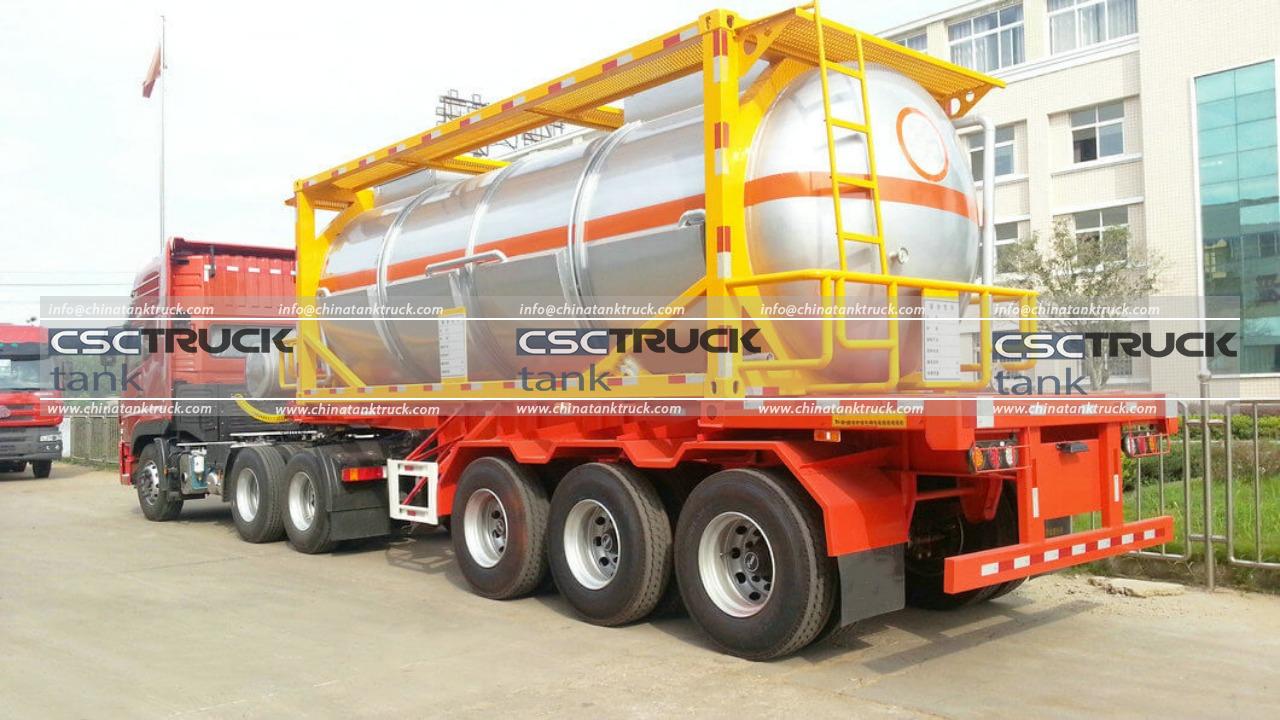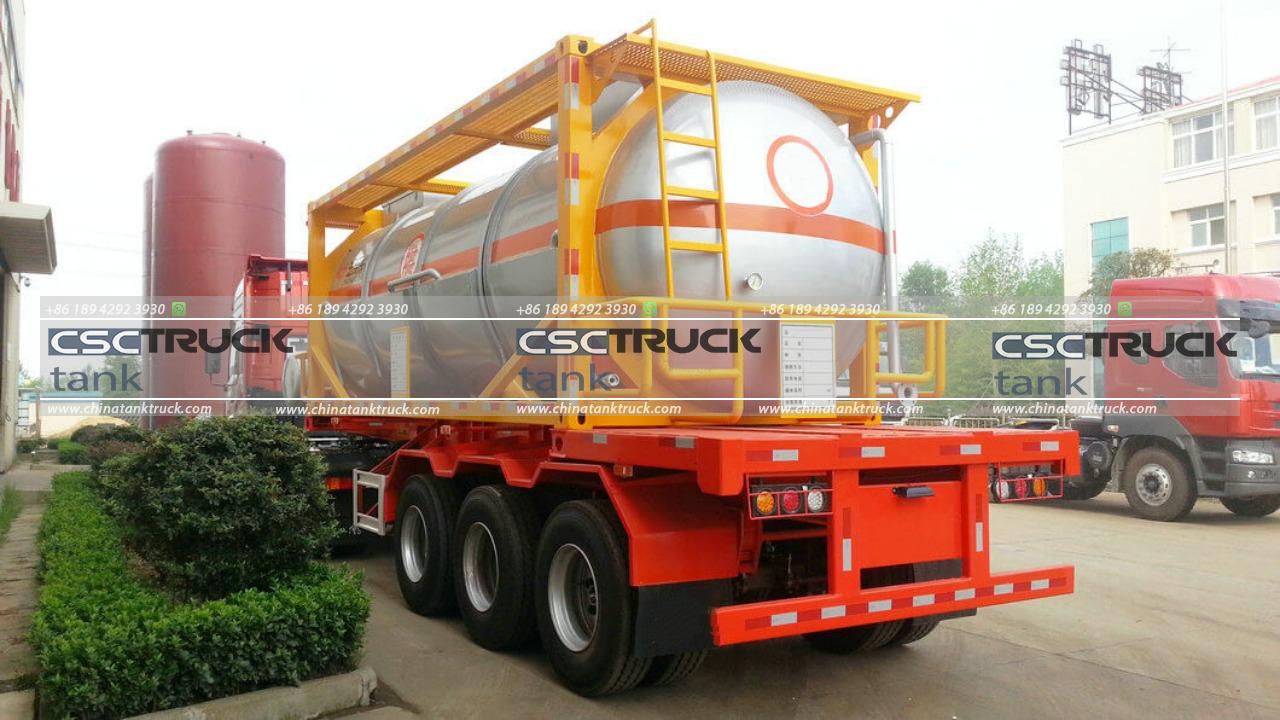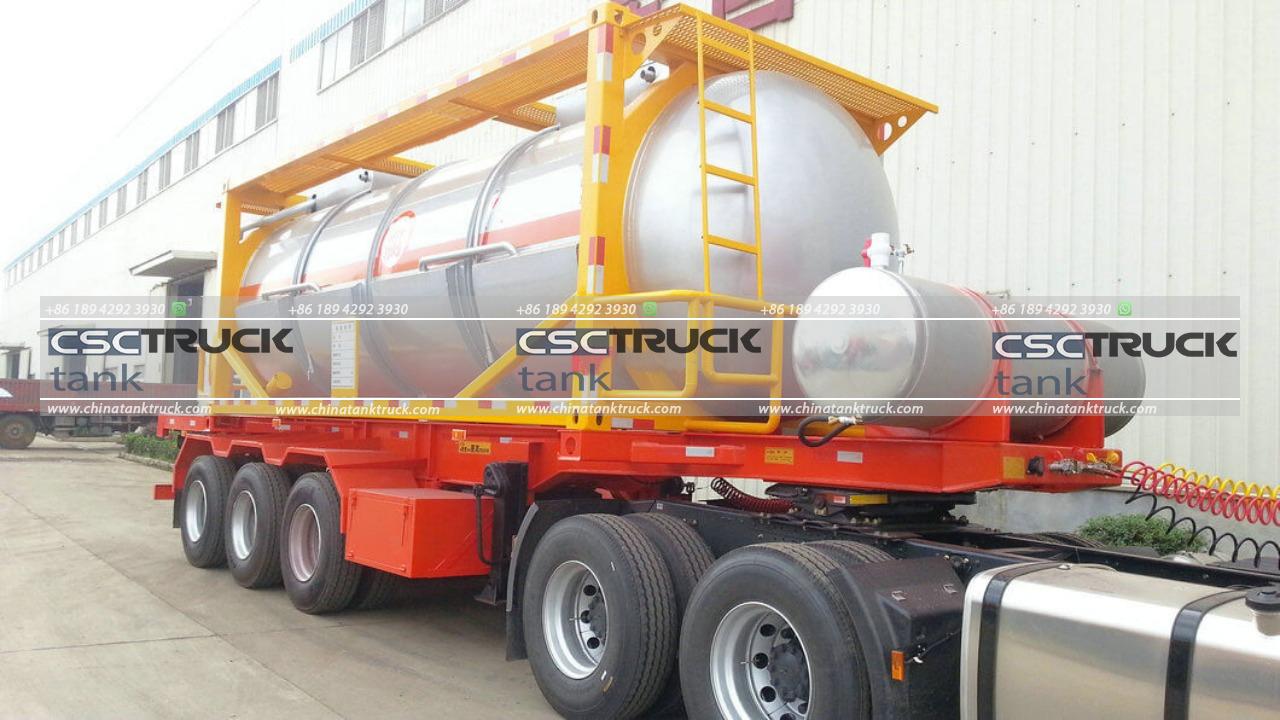What is the Size of an ISO Tank?
ISO tanks play a critical role in the transportation and storage of liquid bulk materials, gases, and other products across various industries, from chemicals to food. But what exactly are ISO tanks, and what is their size? To answer these questions, we must dive into the standardization of ISO tanks, the different types available, and how their sizes impact their use.
What is an ISO Tank?
An ISO tank, or ISO container, is a specialized type of container designed according to standards set by the International Organization for Standardization (ISO). These containers are primarily used for the transport of bulk liquids and gases, including chemicals, food-grade liquids, and fuels, across long distances, typically via sea, road, or rail.
ISO tanks are designed to be compatible with intermodal transport systems. This means they can seamlessly transition between different transportation modes—like trucks, ships, and trains—without needing to unload the cargo. The standardization of ISO tanks has facilitated global trade by ensuring uniformity in terms of design, safety, and handling.

Standard Dimensions of an ISO Tank
Though ISO tanks come in various sizes and configurations depending on the product they are designed to carry, there are standard dimensions that apply to most tanks. These dimensions are set by the ISO to ensure that the containers are compatible with global shipping and transport infrastructure.
The most common sizes for ISO tanks include:
– Length: Typically 20 feet or 6.058 meters.
– Width: 8 feet or 2.438 meters.
– Height: 8 feet 6 inches or 2.591 meters.
These dimensions follow the same standard as a standard 20-foot shipping container. As such, ISO tanks are often referred to as “20-foot ISO tanks” due to their standardized length. However, it’s important to note that other sizes, such as 10-foot, 30-foot, and 40-foot containers, also exist but are less common.
Capacity of ISO Tanks
The capacity of an ISO tank is typically measured in liters or cubic meters. For a standard 20-foot ISO tank, the capacity typically ranges from 17,500 liters to 26,000 liters (or 17.5 to 26 cubic meters). The exact capacity can vary based on the design and intended use of the tank.
– Small tanks: Smaller ISO tanks, such as 10-foot variants, have a reduced capacity and are used for smaller shipments or when specific transport or storage requirements limit the size.
– Larger tanks: On the other hand, 30-foot or 40-foot ISO tanks offer greater capacity, typically ranging between 30,000 liters and 60,000 liters, depending on the specific tank design.
It’s also important to note that the capacity of an ISO tank can be influenced by factors such as insulation (for temperature-sensitive products) and the thickness of the tank walls.

Types of ISO Tanks and Their Sizes
There are several types of ISO tanks, each designed to carry different materials. The size of these tanks may vary slightly depending on the type and purpose.
1. Standard ISO Tank
This is the most commonly used ISO tank and is used to transport a wide range of liquids, including chemicals, fuels, and food-grade liquids. Standard ISO tanks typically adhere to the common dimensions of 20 feet in length, 8 feet in width, and 8 feet 6 inches in height.
2. Swap Body Tank
Swap body tanks differ slightly in that they are not restricted by the length of standard intermodal containers. These tanks are designed to be swapped between different modes of transportation, like trucks and trains. Swap body tanks are often larger than standard ISO tanks, with lengths typically ranging between 23 feet and 30 feet. These tanks are used when more capacity is needed, and the tank doesn’t need to adhere to the strict dimensions of a standard ISO container.
3. Refrigerated or Reefer ISO Tanks
Refrigerated ISO tanks are designed to carry temperature-sensitive cargo, such as perishable food products, certain chemicals, or liquefied gases that need to be maintained at a specific temperature. These tanks are insulated and equipped with refrigeration units. While their external dimensions remain similar to standard ISO tanks (20 feet long, 8 feet wide), the insulation and refrigeration components slightly reduce the internal capacity.
4. Gas ISO Tanks
ISO tanks designed for transporting gases, such as liquefied petroleum gas (LPG) or liquefied natural gas (LNG), are constructed with thicker walls and additional safety features. These tanks are pressurized and heavily reinforced to ensure the safe transport of gases under high pressure. The size of gas ISO tanks can vary, but they often adhere to the standard 20-foot length for ease of transport and handling.
5. Food-Grade ISO Tanks
Food-grade ISO tanks are designed to transport liquids meant for human consumption, such as fruit juices, wine, and edible oils. These tanks are made from stainless steel to prevent contamination and are built to the same dimensions as standard ISO tanks, with a length of 20 feet, width of 8 feet, and height of 8 feet 6 inches. The interior of these tanks is polished and sealed to meet stringent hygiene standards.
How the Size of ISO Tanks Impacts Usage
The size of an ISO tank plays a crucial role in determining its intended use and the industries it serves. Several key factors are influenced by tank size:
1. Capacity and Efficiency
Larger ISO tanks, such as 30-foot or 40-foot variants, provide increased capacity, which translates to fewer shipments and, in turn, reduced transportation costs. For companies transporting large quantities of liquids or gases, using larger tanks is generally more efficient. However, the standard 20-foot tank remains the most popular because it strikes a balance between size, cost, and compatibility with global transport infrastructure.
2. Weight Restrictions
While larger ISO tanks offer more capacity, they are also subject to weight restrictions. Transport regulations impose maximum gross weights for containers, including ISO tanks, so companies must ensure that the tank’s weight, when fully loaded, does not exceed these limits. This is especially important when transporting heavy liquids or gases.
3. Compatibility with Infrastructure
The standardization of ISO tanks means that they are designed to fit into existing transport infrastructure. A standard 20-foot ISO tank can be loaded onto trucks, railcars, and ships without any modifications to the transport system. Larger tanks, such as 30-foot or 40-foot containers, may be subject to restrictions in certain regions, limiting their compatibility with standard intermodal transport systems.
4. Versatility
Smaller ISO tanks, such as 10-foot tanks, offer increased versatility for smaller shipments or where space is limited. These tanks are often used for specialized applications, such as transporting smaller quantities of high-value chemicals or in locations where larger containers are impractical.

Conclusion
In conclusion, the size of an ISO tank is a critical factor that determines its application, efficiency, and compatibility with global transportation systems. While the most common ISO tank size is the 20-foot tank, other sizes are available depending on the specific needs of the cargo. By adhering to ISO standards, these tanks ensure the safe, efficient, and cost-effective transport of liquids and gases across industries and borders.

